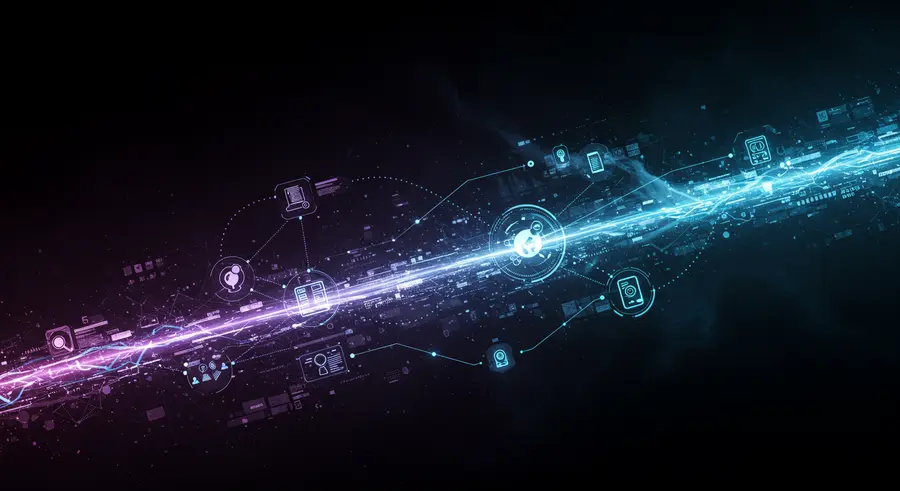
Serverless and the Rise of Edge Computing: A Symbiotic Future
The technological landscape is constantly evolving, driven by demands for lower latency, increased bandwidth, and more intelligent processing closer to the data source. In this exciting evolution, two paradigms are emerging as particularly powerful: serverless computing and edge computing. While seemingly distinct, their convergence promises a truly symbiotic future for distributed applications.
The Essence of Serverless
Serverless computing, at its core, frees developers from the burden of infrastructure management. Instead of provisioning and maintaining servers, developers deploy functions (FaaS - Function-as-a-Service) or leverage managed services (BaaS - Backend-as-a-Service) that automatically scale and execute in response to events. This "pay-per-execution" model brings tremendous benefits in terms of cost efficiency, scalability, and developer velocity. You write your code, and the cloud provider handles everything else – from scaling to patching.
Understanding Edge Computing
Edge computing, on the other hand, involves processing data closer to where it's generated, rather than sending it all the way to a centralized cloud data center. This is crucial for applications where latency is critical, such as IoT devices, autonomous vehicles, real-time analytics, and augmented reality. By bringing computation to the "edge" of the network, we minimize the round-trip time to the cloud, improve responsiveness, and often enhance security by keeping sensitive data localized.
The Powerful Convergence
The true power emerges when serverless and edge computing are combined. Imagine deploying serverless functions not just in a distant cloud region, but directly on edge devices or local gateways. This creates a highly distributed and responsive architecture where:
- Ultra-low Latency: Critical data processing can happen instantly at the source, enabling real-time decision-making for IoT sensors, smart factories, or even smart cities. No more waiting for data to travel thousands of miles to a centralized server.
- Enhanced Scalability: Serverless functions can scale independently at each edge location based on local demand, providing unparalleled resilience and availability even with intermittent connectivity to the central cloud.
- Reduced Bandwidth Costs: Only processed, relevant data needs to be sent back to the central cloud for long-term storage or deeper analysis, significantly reducing bandwidth consumption and associated costs.
- Improved Security & Compliance: Sensitive data can be processed and filtered at the edge, reducing its exposure during transit. This is particularly important for industries with strict data residency and privacy regulations.
- Offline Capabilities: Edge serverless can enable applications to function even when connectivity to the central cloud is temporarily lost, ensuring business continuity.
Use Cases and Real-World Impact
The synergy between serverless and edge computing opens doors to a plethora of innovative applications:
- Industrial IoT: Real-time anomaly detection on manufacturing lines, predictive maintenance for machinery, and localized control systems that react instantly to changes in operational parameters.
- Smart Cities: Managing traffic flow based on real-time sensor data, optimizing public transportation, and powering smart surveillance systems with immediate facial recognition or object detection.
- Content Delivery Networks (CDNs): Dynamic content personalization and edge-side rendering for web applications, delivering lightning-fast experiences to users globally.
- Healthcare: Processing patient data on local devices for immediate diagnostics, ensuring data privacy, and enabling responsive medical equipment.
- Autonomous Vehicles: Instantaneous processing of sensor data for navigation, obstacle detection, and decision-making, where even milliseconds of delay can be critical.
- Retail: Inventory management, personalized in-store experiences, and fraud detection at the point of sale without constant cloud communication.
For developers and organizations looking to optimize their financial strategies and gain deeper market insights, tools for market analysis can be crucial. Imagine an AI-powered financial companion that leverages both cloud and edge capabilities to provide real-time updates and portfolio management, much like how serverless and edge computing combine to offer powerful, distributed solutions for modern applications.
Challenges and the Road Ahead
While promising, the serverless-edge paradigm is not without its challenges. Managing deployments across a vast number of edge locations, ensuring consistent software versions, and debugging distributed systems require sophisticated tools and practices. Security at the edge also presents unique considerations, given the physical accessibility of devices.
However, ongoing advancements in containerization, WebAssembly (Wasm) at the edge, and sophisticated orchestration platforms are rapidly addressing these hurdles. We are moving towards a future where computing power is truly ubiquitous, adapting intelligently to the needs of individual applications and devices.
Conclusion
The future of serverless architectures is inextricably linked with the rise of edge computing. This powerful combination promises to unlock unprecedented levels of performance, scalability, and resilience for the next generation of distributed applications. By bringing compute closer to data, we are not just optimizing infrastructure; we are fundamentally reshaping how we build and interact with the digital world. The symbiotic relationship between serverless elasticity and edge immediacy is setting the stage for a truly intelligent and responsive computing era. Explore more about cloud computing concepts on Wikipedia or delve into specific serverless platforms like AWS Lambda.